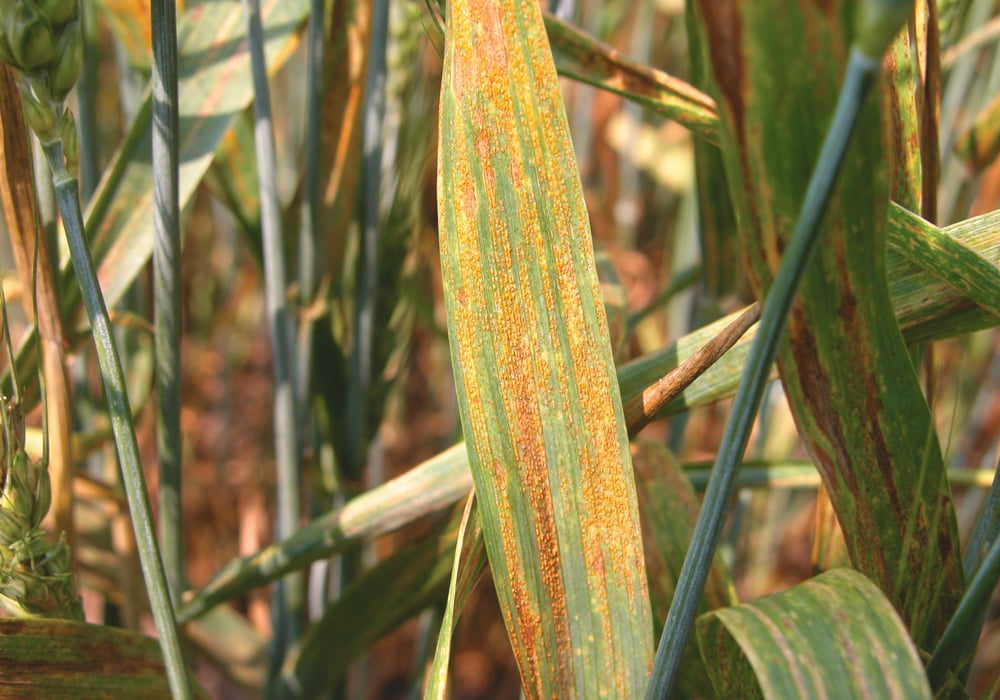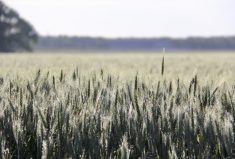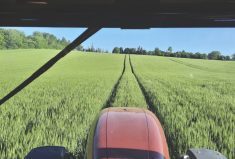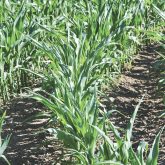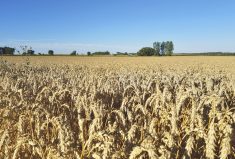Stripe rust is wily and tough. For the longest time, Canadian farmers could depend on cold winters and a fairly hot, dry summer climate to keep it at bay. But stripe rust is also highly adaptable and around 2000, scientists noticed a change.
“Pathogens always evolve,” says André Laroche, a research scientist with Agriculture and Agri-Food Canada (AAFC) in Lethbridge. “In 2000 new isolates of the stripe rust pathogen developed the capacity to infect in drier, warmer conditions and were able to infect susceptible wheat all over the Prairies — the pathogen is very efficient at mutating and causing infection. Prior to 2000, there was no need to develop resistant cultivars for this pathogen outside the irrigated region of southern Alberta.”
Read Also

Producers aren’t panicking over tariffs and trade threats
The influence of tariff and trade uncertainity on farm business decisions.
Times have changed.
Resistance to stripe rust in Canadian wheat cultivars is fairly low and while work to develop resistant varieties is ongoing, stripe rust’s ability to quickly adapt to and overcome single-gene resistance makes this a long and complicated process. In other words, robustly resistant cultivars could take a while to get here. In the meantime, farmers are looking for other solutions now, and Laroche thinks he may have one.
“We wanted to find a way that’s simpler, faster and sensitive enough to detect stripe rust spores,” he says. The idea is that if farmers had a way of knowing if disease spores were present in sufficient quantities to cause infection, they could act more quickly to protect crops and prevent yield loss before visible symptoms of stripe rust set in, and spray only when necessary to preserve fungicide tools.
With funding from the Western Grains Research Foundation and the Saskatchewan Wheat Development Commission, Laroche and his team may have found a path forward.
A test that stands the test
Assays are complex to develop. In essence, they are analytical tools designed to measure the quantity or quality of a specific target using a specific reagent known to react only to that target and nothing else. So researchers needed a specific biological target — in this case stripe rust spores — and a specific biological reagent that accurately detects that target — an antibody that had already been developed through previous research.
That’s a massive oversimplification, but Laroche and his team were starting from a point of strength — they already had an antibody (well, two antibodies actually — a primary and a secondary). Stripe rust spores, specifically their DNA, were another matter.
Laroche explains that the goal was to develop a rapid assay that would detect the presence and quantity of stripe rust ureniniospores using highly sensitive DNA-based technology. (Ureniniospores are one of up to five spore stages in the rust life cycle and the forerunners of infection. If they are present, then visible symptoms of disease will inevitably follow within two to three weeks.)

The trouble is that to get at that DNA, the ureniniospores must be cracked open, which is difficult because of their thick cell walls, and it’s even more challenging when they are not abundant. So the team developed two different yet complementary approaches that would lead them to a solution.
“In the direct assay, we linked the DNA to the primary antibody that recognized the stripe rust spores, and used that to multiply the signal,” says Laroche. “We also used an indirect way where we used a secondary antibody linked to the DNA reporter sequence to react with the first antibody to enable an indirect multiplication in the system.”
If that sounds complicated (and it does), what it boils down to is that researchers found a way to detect the target stripe rust without having to crack open the ureniniospores. And they did it by, as Laroche puts it, “interrogating the surface of the spore,” which allowed them to build an assay that detected interactions with proteins and other molecules found on the surface of ureniniospore cell walls. They ended up with an assay that clearly and reliably “lights up” or signals, when stripe rust ureniniospores are present.
So far so good, but the mere presence of stripe rust ureniniospores is only part of the equation. “How many ureniniospores need to be present for infection to occur?” asks Laroche. “It was a question we had for some time. There is no literature on that, so when we started, we didn’t know how many we needed to cause infection.”
As it turns out, as few as 1,000 to 100,000 ureniniospores floating around are enough to cause stripe rust infection. Those are small numbers when it comes to fungi where spores are often counted in the millions. So Laroche needed to make sure the assay being developed could detect very low levels of ureniniospores. “My biggest worry was whether it was going to be sensitive enough,” he says. The antibody tests showed that the assay could detect between 20 and 40 ureniniospores from different stripe rust isolates, proving the test was highly sensitive and therefore highly reliable.
Next steps
The main goal with all of this work is to protect wheat yield and also the fungicide tools farmers still have when it comes to stripe rust management. If you’ve heard it once, you’ve heard it a thousand times that infection occurs before visible symptoms develop, which is why preventive fungicide application has become common. But that has its downside.
“Everybody knows that spraying ‘in case’ is not a mid-term or long-term solution because the pathogen could develop resistance to the active ingredients,” says Laroche. “There are only two fungicide classes useful now against stripe rust, and the day you lose that ultimate tool, you’re in deep trouble. People are aware of it; there is a level of concern. They need to protect their future.”
The rapid-detection system Laroche and his team have developed can help farmers do that by letting them know if their wheat crop is in danger of being infected with stripe rust or not. Deploying it is the next hurdle.
“The assay is a little bit tricky,” says Laroche. “You need specialized equipment to read it. One way it could work is if farmers have a device to collect spores that they can send to a service lab for testing, and the lab could say we found them and how many, or say if it’s clean.”
Another idea is a larger program of aerobiological surveillance. “We could have an organization with detectors spread out across the land,” says Laroche. “There could be a reading of air samples once a week, and we could send an automated message to growers.” Those messages could let farmers know if they’re in a hotspot, for instance, or let them know there are not enough stripe rust spores to cause a problem in their area.
Right now, Laroche and the team at AAFC Lethbridge are working with farmers to figure out what approach will work best.

